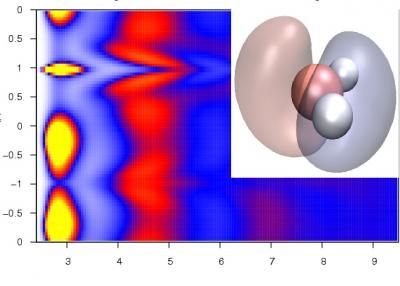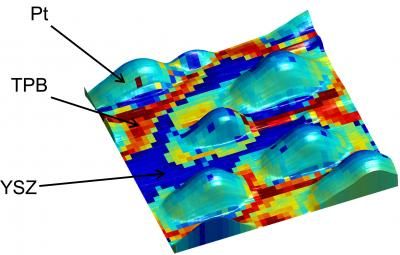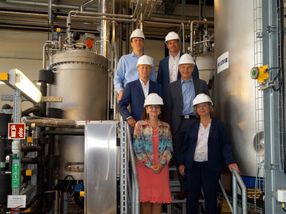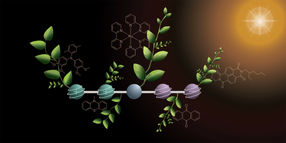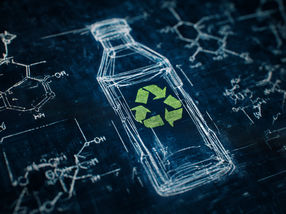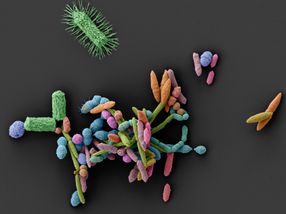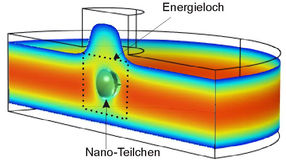SEEING the atom - A 50 year dream fulfilled with next generation microscope technology
Advertisement
Royal Microscopical Society (RMS) President, Professor Mark Rainforth, clarifies the significance of a new technique which is undergoing a quiet revolution, "Until recently it has only been possible to see a projection of atoms, not the individual atomic columns themselves. However, we live in exciting times, with literally a revolution in microscopy and a 50 year old dream fulfilled."
He continues, "R. Feynman, Nobel Laureate, predicted the need for aberration-free transmission electron microscopes in 1959 with the words: "It would be very easy to make an analysis of any complicated substance; all one would have to do would be to look at it and see where the atoms are. ... I put this out as a challenge: Is there no way to make the electron microscope more powerful? From his lecture:" There's Plenty of Room at the Bottom". This question has, at last, been answered with a resounding "yes!""
New aberration-correction lenses allow, for the first time, the position and chemistry of single atomic columns to be directly resolved. This is leading to many long standing scientific issues and questions being re-visited. For example, the presence of intentional or unavoidable trace elements in materials can dramatically alter properties, but until the advent of the latest TEM techniques, determination of the trace element location was extremely difficult.
These new microscopy techniques will bring new understanding in the degradation mechanisms in solid oxide fuel cells, a crucial technology for the future of sustainable, low carbon emission and power generation. Similarly, developing new light weight high strength steels for the transport industries, crucial to reducing green house gas emissions, will require the latest high resolution techniques.
At MICROSCIENCE 2008, ExCeL, London, 24-26 June, further developments in this new technique will be presented in the scientific conference, as well as on show in the free to attend exhibition.
Most read news
Topics
Organizations
Other news from the department research and development

Get the chemical industry in your inbox
By submitting this form you agree that LUMITOS AG will send you the newsletter(s) selected above by email. Your data will not be passed on to third parties. Your data will be stored and processed in accordance with our data protection regulations. LUMITOS may contact you by email for the purpose of advertising or market and opinion surveys. You can revoke your consent at any time without giving reasons to LUMITOS AG, Ernst-Augustin-Str. 2, 12489 Berlin, Germany or by e-mail at revoke@lumitos.com with effect for the future. In addition, each email contains a link to unsubscribe from the corresponding newsletter.
Most read news
More news from our other portals
Last viewed contents
Jean_Stas
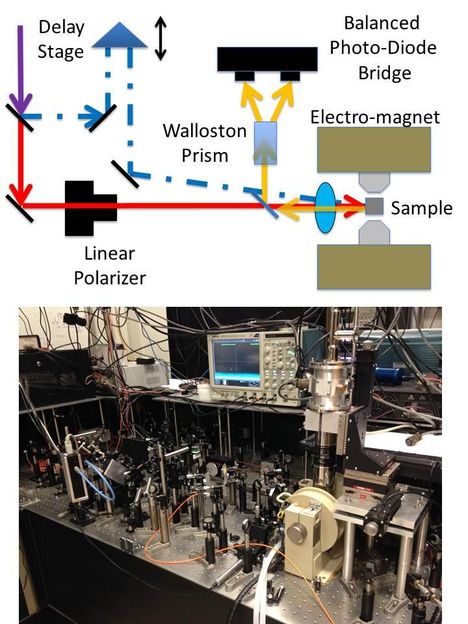
A new spin on spintronics - Michigan team tests radiation-resistant spintronic material, possibly enabling electronic devices that will work in harsh environments
DAN_(protein)

Safer, cheaper, more flexible battery invented for wearable tech - Self-healing battery with excellent energy density, power density, cycle life, flexibility, and self-healing even after ten self-healing cycles
Louis_Nicolas_Vauquelin
W'_boson
Gravitational_energy

Traceless materials secures €36.6 Million Series A to build first industry plant for bio-circular alternative to plastic - Change-enabler for driving the green transformation of the industry
Bismarck_brown_Y
Vandetanib
